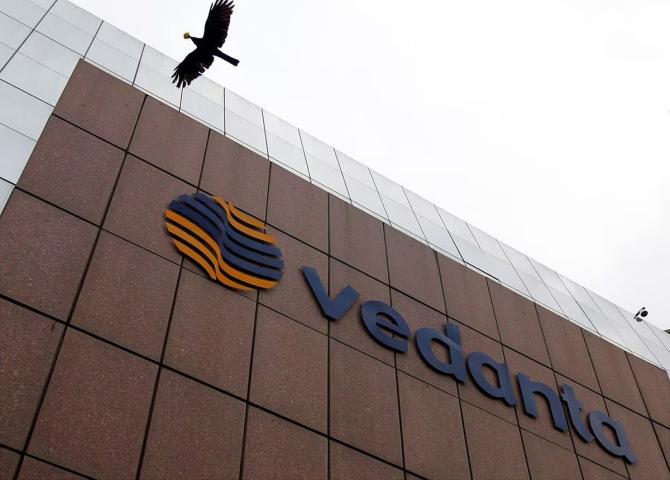Mining major Vedanta’s consolidated net profit plunged 58.69 per cent year-on-year (Y-o-Y) to Rs 1,798 crore in the second quarter of 2025-26 (Q2FY26), dragged down by exceptional losses booked during the period under review.

Photograph: Danish Siddiqui/Reuters
The company had reported a net exceptional gain of Rs 1,160 crore in Q2FY25.
The exceptional loss included a write-off of Rs 1,407 crore in Talwandi Sabo Power (TSPL), a wholly owned subsidiary of Vedanta, in pursuant to a Supreme Court order dated in August 19.
A review petition by TSPL is pending in court, but the amount has been considered non-recoverable.
On the other hand, it also includes a settlement payment of Rs 660 crore to SEPCO Electric Power Construction Corporation. Its revenue rose by 5.94 per cent to Rs 39,868 crore in the quarter under review.
According to the company’s earnings release, revenue was driven by higher London Metal Exchange (LME) premia and forex (foreign exchange) gain, partly offset by lower volume.
“This has been largely driven by cost reduction efforts and supported by metal prices, while on volumes, we could have done better.
“Referring to a 13 per cent jump in profit after tax before exceptional items on a year-on-year basis in Q2 and 12 per cent growth in earnings before interest, taxes, depreciation, and amortisation (Ebitda) in Q2 Y-o-Y),” Arun Misra, executive director of Vedanta, told Business Standard.
Misra said that the second half of FY26 (H2FY26) across all of Vedanta’s operations is expected to be good, due to better weather conditions after the monsoon.
“The supply chain is more stable, and a good temperature (low temperature) for the metal and mining business is always more productive this time of year.
“We always see H2 (in terms of FY26) performance-wise quite tilted towards being 30 to 40 per cent better than H1.
“We will see higher volumes in H2, and typically with higher volumes and longer run hours, you have less expenditure for shutdown and other one-time expenditures that go into the plant, which results in a lower cost of operation.
“So, we can expect better results in the second half than in H1,” he highlighted.
On the company’s expected demerger into five separate entities, Vedanta Aluminium, Vedanta Oil and Gas, Vedanta Power, Vedanta Iron and Steel, and Vedanta, Ajay Goel, chief financial officer (CFO), Vedanta, said that the next hearing before the NCLT on November 12 is expected to be the conclusive one.
“We are on the final stage of the demerger. Our earlier commitment for the demerger to conclude by the end of March 2026; that timeline does not change,” he said, adding that the company’s guidance on profitability for the full financial year remains at about $6 billion, or around Rs 53,000 crore.
One main area that the company is focusing on is investing capital for volume augmentation.
Goel emphasised that the company’s net debt to Ebitda ratio stands at 1.37 times, improving from 1.49 times last year.
As of September, Vedanta’s net debt is at Rs 62,063 crore, as per its release.
In the aluminium business, the company reported the highest ever quarterly and half-yearly metal production at 617 kilo tonnes (KT) and 1,222 KT respectively, as per its investor presentation.
Zinc’s mined metal production in the first half of FY26 was 523 KT, with salable silver production in the Q2 being 144 metric tonnes (MT), lower in line with lead production.
In Zinc’s international business, Vedanta reported higher production by 44 per cent on year, led by the Gamsberg mine’s performance, the investor presentation stated.
On the acquisition of bankrupt Jaiprakash Associates (JAL), Goel said that the company will fund the acquisition via its internal cash accruals.
“It (the acquisition) is in early days. We have already got approval from the Competition Committee of India.
“The COC is still voting. That must reach a conclusion by mid-November.
“Now, the NPV (net present value) of the entire funding is about Rs 12,500 crore and that is over five to six years.
“Looking at Vedanta’s strength of the balance sheet and our operating free cash flows, JAL’s acquisition will be funded through our internal cash,” he said.




